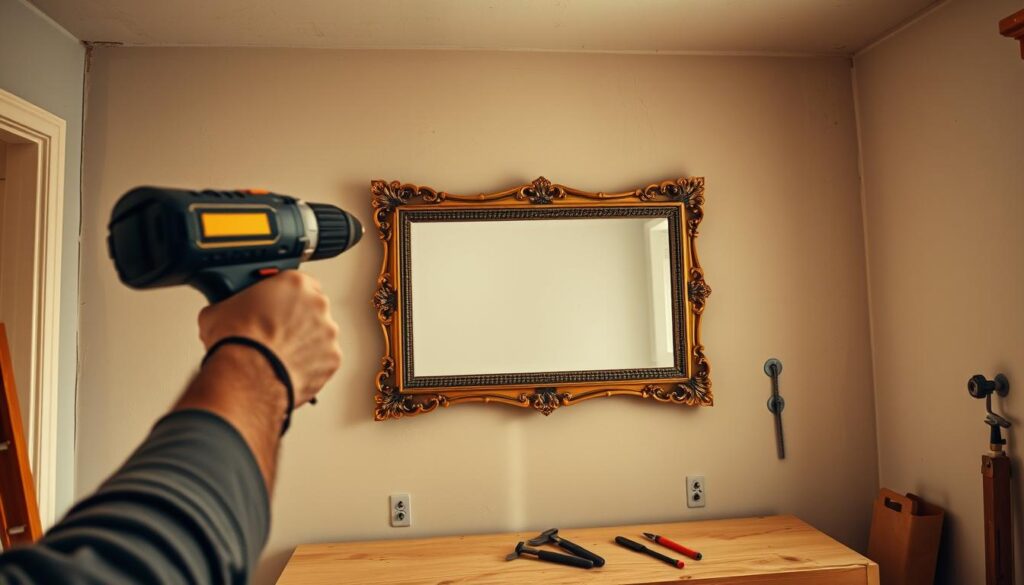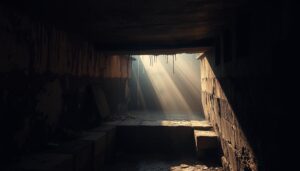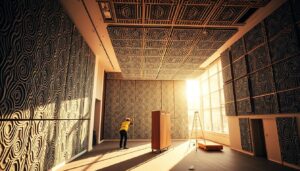Are you wondering how to add a touch of elegance to your room without risking damage to your walls or the mirror itself?
Hanging a large mirror can be quite intimidating, especially when dealing with drywall. Standard nails or screws often can’t support substantial weight without proper anchoring, making it crucial to understand the challenges involved.
By assessing your wall type, determining the mirror’s weight, and choosing the right hardware, you can ensure a safe and secure installation.
Key Takeaways
- Assess your wall type before hanging a large mirror.
- Determine the weight of your mirror to choose the right hardware.
- Select appropriate hardware to support the mirror’s weight.
- Follow proper installation techniques to avoid damage.
- Ensure the mirror is securely in place to prevent accidents.
Understanding Your Wall and Mirror
Understanding the characteristics of your wall and mirror is vital for a safe installation. Before you start, it’s essential to know the type of wall you’re dealing with and the weight of the heavy mirror you want to hang.
Different Types of Walls
There are several types of walls you might encounter: drywall, plaster, and masonry. Drywall is a common building material used for walls and ceilings, but it has a limited weight-bearing capacity. Plaster walls are more brittle and prone to cracking, while masonry walls provide excellent support but require specialised drilling equipment.
| Wall Type | Characteristics | Hanging Requirements |
|---|---|---|
| Drywall | Limited weight-bearing capacity | Proper anchoring required |
| Plaster | Brittle and prone to cracking | Careful handling needed |
| Masonry | Excellent support | Specialised drilling equipment required |
Determining Your Mirror’s Weight
Accurately determining your mirror’s weight is crucial. Check the product specifications or weigh it yourself using a bathroom scale if the weight is not provided.
Assessing the Hanging Hardware on Your Mirror
Examine the back of your mirror to assess the hanging hardware already attached. Determine if you need to install additional hardware before mounting.
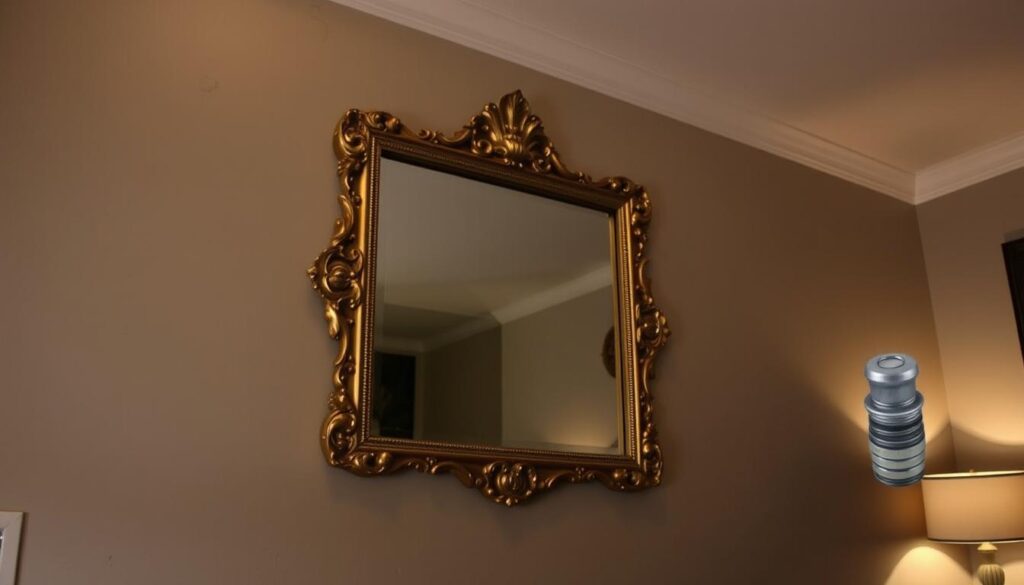
Essential Tools and Materials for Hanging Heavy Mirrors
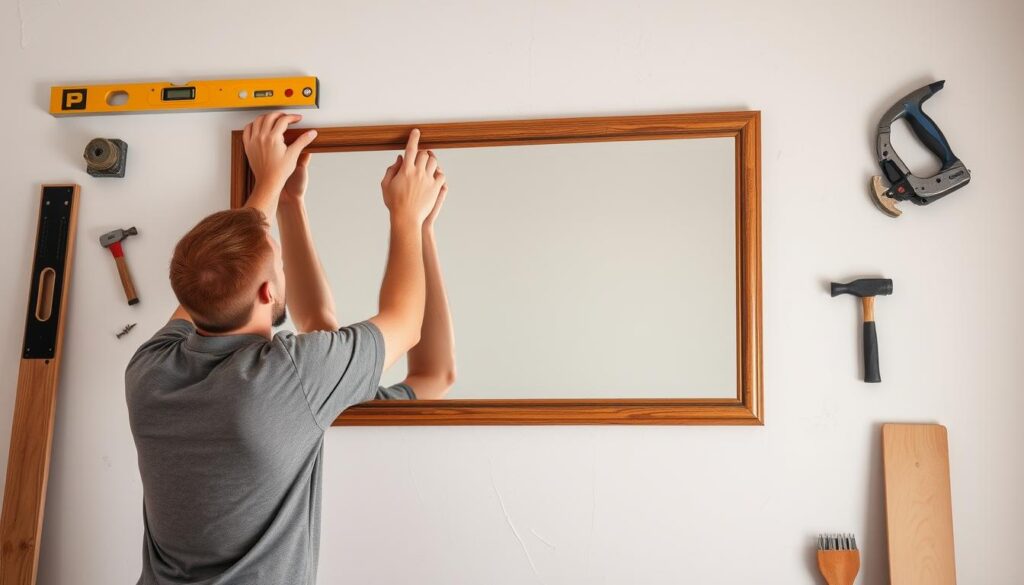
To hang a heavy mirror safely, you’ll need to gather the necessary tools and materials. Having the right equipment will make the task less daunting and ensure that your mirror is securely fastened to the wall.
Basic Tools You’ll Need
Gathering the right tools before starting your project will save time and frustration. Essential items include a stud finder, drill with appropriate bits, screwdriver, measuring tape, pencil, and a spirit level. A quality stud finder is invaluable for locating wall studs, which provide the most secure mounting points for heavy mirrors.
Types of Wall Anchors and Hardware
Understanding the various types of wall anchors is crucial. Toggle bolts, molly bolts, and expansion anchors all have different weight capacities and installation methods suited for different situations. For hanging heavy mirrors, you may also consider using D-rings and picture wire for a flexible hanging system or French cleats for exceptional stability.
Preparing to Hang Your Heavy Mirror on Drywall
The process of hanging a heavy mirror on drywall begins with thorough preparation to prevent potential issues. To ensure a safe and successful installation, you need to consider several factors, including the location of your mirror, the presence of wall studs, and precise measurements.
Finding the Perfect Location
Selecting the optimal location for your mirror involves both aesthetic considerations, such as what the mirror will reflect, and practical factors, including available wall space and stud locations. You should choose a location that not only enhances the room’s appearance but also provides the necessary support for the mirror’s weight.
Locating Wall Studs
Using a multifunction stud finder is crucial to locate any studs, pipes, or wires behind your drywall. This tool helps you identify the strongest mounting points. Ideally, you should secure at least one screw into a stud, especially for heavy mirrors. Avoid drilling through pipes or inserting a screw into live wires, as this could cause serious damage or safety hazards.
Measuring and Marking the Wall
Measurements are critical to making sure your mirror is level. Start by measuring and marking the top of the mirror’s position with painter’s tape. Then, use a level to ensure the line is straight. For wire-hung mirrors, account for the “sag” of the wire when under tension by measuring how high it rises when pulled taut. Double-check all measurements before drilling any holes to avoid unsightly damage to your wall.
By carefully preparing and following these steps, you can ensure that your heavy mirror is hung safely and securely on your drywall.
Choosing the Right Hardware for Your Mirror’s Weight
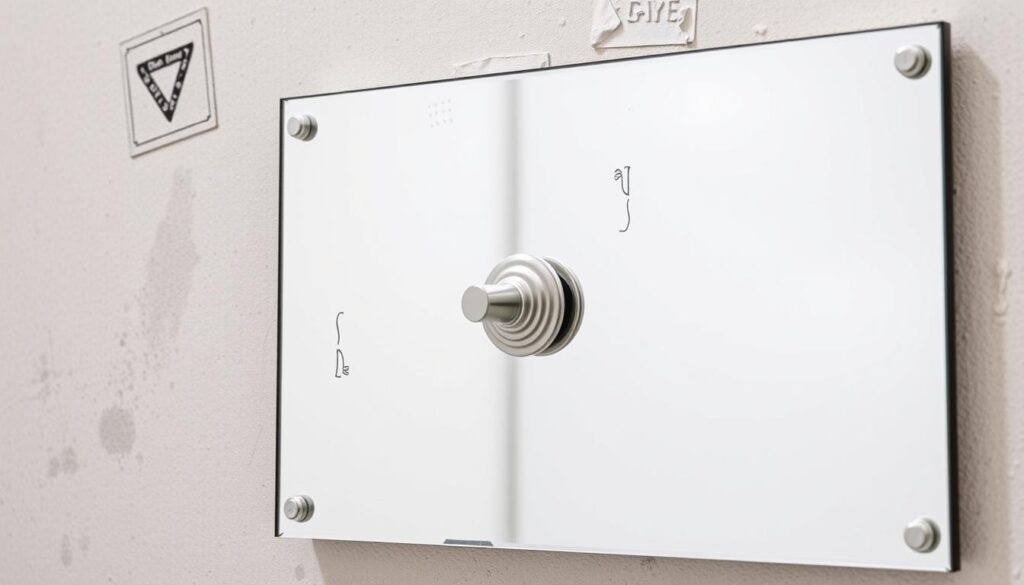
The weight of your mirror dictates the type of hardware you should use to hang it safely on drywall. For heavier mirrors, it’s essential to use heavy-duty D-rings or J-hooks rated for the weight of the mirror.
Drywall Anchors and Their Weight Capacities
Standard plastic drywall anchors typically support only 10-15 pounds, while toggle bolts can hold 50-100 pounds, making them suitable for most heavy mirrors when studs aren’t available. Understanding the weight capacity ratings of different anchor types is crucial.
Using D-rings and Wire for Heavy Mirrors
D-rings paired with appropriate picture wire create a reliable hanging system for mirrors up to 50 pounds. The quality of the wire matters; stainless steel wire offers significantly more strength than standard braided wire.
French Cleats for Extra Heavy Mirrors
For extremely heavy mirrors (over 60 pounds), French cleats provide exceptional stability by distributing the weight evenly across a wider area of the wall. This ensures a secure installation that will last for years.
When using wire hanging systems, the wire should be rated for at least twice the mirror’s weight, and D-rings should be securely attached to the mirror’s frame with screws penetrating at least 3/4 inch into solid wood.
Step-by-Step Guide to Hang Heavy Mirror on Drywall
To hang a heavy mirror on drywall safely, follow this step-by-step guide that covers essential techniques and precautions. Hanging a heavy mirror requires careful planning to ensure it is securely fastened to the wall.
Installing Wall Anchors Properly
When hanging a heavy mirror on drywall, using the right wall anchors is crucial. If you’re not screwing into a stud, you’ll need drywall anchors that can support the weight of your mirror. To install, drill a pilot hole, then insert the anchor and tap or screw it into place, flush against the wall. For added security, use a metal toggle bolt, which is the strongest wall anchor available.
Tip: When installing toggle bolts, ensure the hole is precisely the recommended size. Too small, and the toggle won’t fit; too large, and it won’t grip properly.
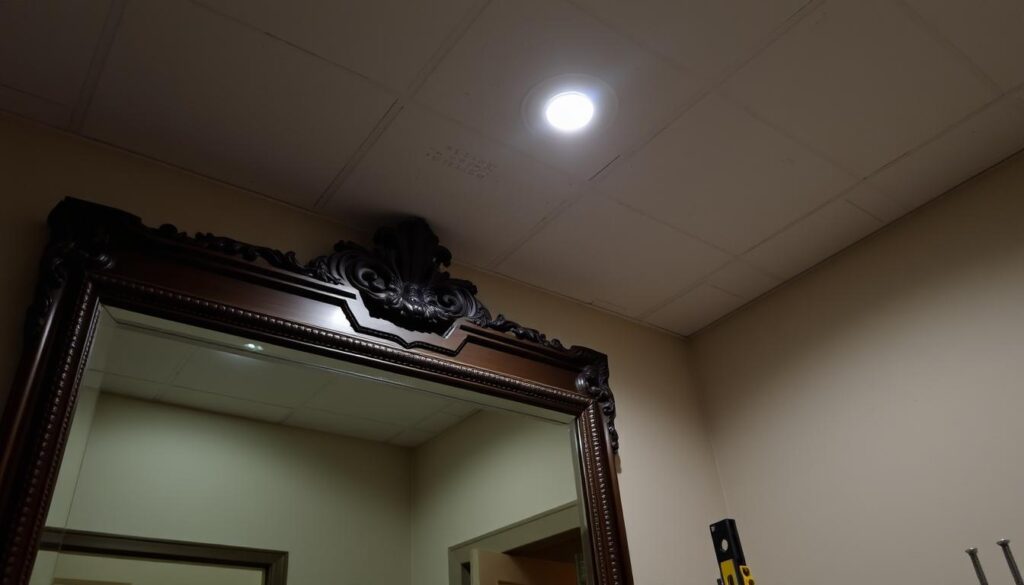
Mounting Hardware to the Wall
For stud mounting, use appropriate wood screws driven directly into the stud. Leave enough of the screw exposed to support your hanging hardware. When installing multiple anchors for larger mirrors, make sure they’re perfectly level to prevent uneven weight distribution.
Securing the Mirror Safely
Once your wall hardware is installed, test its security by pulling downward with a force equivalent to the mirror’s weight. When mounting the mirror, have a helper assist you to prevent injury. After hanging, check the mirror’s level and make any necessary adjustments. Finally, apply small adhesive bumpers to the bottom corners of the mirror’s back to prevent it from tilting forward and to protect your wall from scratches.
By following these steps, you can ensure your heavy mirror is hung safely and securely on your drywall.
Troubleshooting and Safety Tips
Once you’ve hung your heavy mirror, it’s crucial to check that it’s secure and level to prevent any accidents. Ensuring the mirror is safely hung is not just about the hanging process, but also about ongoing checks to maintain its stability.
Signs Your Mirror Isn’t Secure
Regularly inspect your hung mirror for signs of instability. Check if the mirror is tilting forward or if there’s visible strain on the hanging wire. Also, look out for anchors beginning to pull away from the wall. If you notice any of these signs, take immediate action.
- Check for cracks around the anchors.
- Ensure the mirror is hanging evenly.
- Verify that the hanging wire is not strained.
Preventing Wall Damage
To prevent wall damage, use appropriate anchors for your wall type. Avoid overtightening screws, which can strip drywall. Applying protective bumpers to the back corners of the mirror can also help prevent damage.
When to Call a Professional
For extremely heavy mirrors or installation on problematic wall surfaces, consider consulting a professional. They have the specialised tools and expertise to ensure a safe and secure hanging process. If you’ve made multiple unsuccessful attempts to hang your mirror securely, it’s time to seek professional help.
By following these tips, you can ensure your heavy mirror is hung safely and securely on drywall.
Conclusion
You’ve now gained the knowledge to hang a heavy mirror on drywall with confidence. By following the proper steps and using the right hardware, you can ensure a secure installation that will last for years to come.
Key takeaways include assessing your wall type, measuring your mirror’s weight accurately, and selecting suitable hanging hardware. Regular maintenance checks will help prevent accidents and keep your mirror securely in place.
Remember, different rooms may require different considerations. For instance, bathroom mirrors may need special moisture-resistant hardware, while mirrors in high-traffic areas might benefit from additional security features.
By applying the techniques you’ve learned, you can successfully complete other wall-hanging projects, enhancing your space aesthetically and safely.
